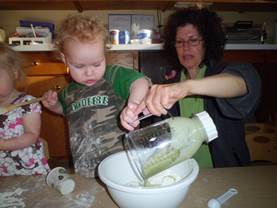
Shalan Knapke, Gail Lawrence, and Mindy Moses
The Honeybee Room: Infants and Toddlers
St. Ambrose University Children’s Campus
Davenport, Iowa
The Cooking with Spinach Project took place in the Honeybee room, the infant/toddler classroom of St. Ambrose Children’s Campus, which is part of St. Ambrose University in Davenport, Iowa.
Children in the Honeybee room attend eight hours a day, five days per week. The project took place March through May of 2012. Eight children between the ages of 8 months and 23 months participated in the project, which involved cooking, growing, and eating spinach.
Gail Lawrence, the assistant teacher in the Honeybee room, facilitated much of this project. Gail’s professional goal for the 2011–2012 year was cooking with infants and toddlers. This project was one step toward meeting her goal. Prior to the spinach project, she had introduced the children to mini projects about corn, apples and carrots. With the support of lead teacher Shalan Knapke and part-time assistant teacher Mindy Moses, she turned the final food activity of the year into a full-blown project.
The Children’s Campus supports the education and growth of all teachers, children, and families within their program. Gail and her co-teachers had the support of the St. Ambrose Children’s Campus faculty as they engaged children in the project on cooking with spinach.
Phase 1. Beginning the Project
A Teacher’s Inspiration: “When Life Throws You Brown Bananas, Make Smoothies”
Gail had been thinking for several weeks about introducing the children to spinach. She wondered how to make spinach engaging to the children. After washing it, tearing it, and putting it in their mouths, what more would the infants and toddlers want to do with spinach?
Meanwhile, some leftover bananas in the center’s kitchen were turning brown, and Gail wanted to use them. Looking in the refrigerator, she also found some yogurt and strawberries. On the counter was a blender. She thought that smoothies made from the bananas, the yogurt, and the strawberries would make a delicious afternoon snack for the children. Little did she know that those brown banana smoothies would lead to the introduction of the Spinach Project!
The children were fascinated as Gail plopped the brown banana and other ingredients into the blender. However, she did not expect startled cries from every child when she turned on the machine. She will never forget how fast they jumped from their seats and ran from the area!
Introducing the blender dance
To help the children cope with their fear of the blender noise, Gail decided to show them a silly “blender dance.” She dramatized the loud blender by shaking her arms and legs and making blenderlike noises. She was grateful that the children stopped crying. She was also delighted that each child sampled the finished smoothie and asked for seconds!
The blender became a fixture of the Honeybee room after the first smoothie event, and soon everyone was doing the blender dance. The children and teachers experimented with flavoring the smoothies with leftover fruit during the next week. This made Gail wonder, “What about adding spinach to our smoothie ingredients?”
Making Spinach Smoothies: “Try It, You’ll Like It”
One day, when Eli (23 months), Conlan (22 months), and Reese (16 months) awoke from their afternoon naps, Gail placed the blender on the floor (after removing the blade) along with a basket of pretend food. The toddlers took turns taking off the lid and placing food inside the blender. Gail watched their investigations and their play using the appliance and decided it would be a good opportunity to bring out a bag of fresh spinach from the classroom refrigerator. She presented it to the children and asked them if they knew what it was. “Milk!” Eli said. “No. What else can it be?” she asked. “Meat!” Eli responded. “Juice!” Eli was making inferences based on his knowledge of food, but it appeared that bags of leafy green vegetables were new to him! “Open!” Eli exclaimed. “We will open the spinach for snack. Would you like to put some in the blender to make smoothies?” Gail asked. “Yes!” Eli responded.
This experiment was very interesting to Gail as well, because she had no experience with adding spinach to smoothies. What would they look like? How would they taste? Would the children like them as much as the fruit smoothies?
The spinach smoothies they made were bright green and shared the same fruity flavor as the previously sampled blended drinks. The children and teachers tried it, and they liked it! “Hooray” said Ani (21 months). “Mah (More),” requested Reese (16 months). During the next week, children participated in making this new variety of smoothy. (See Figures 1–4.)
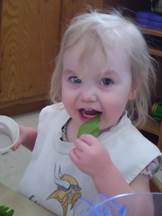
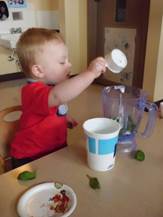
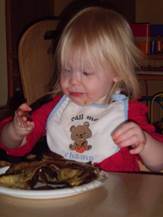

Soon, the parents became curious about what was happening in the classroom, and many lingered to make spinach smoothies with the children (see Figure 5).
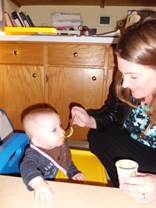
Shalan, Mindy, and Gail sensed that these eight young children, along with their parents, were motivated to continue the study of cooking. The initial experience with spinach smoothies was the springboard for the project on Cooking with Spinach.
Phase 2: Developing the Project
The Importance of the Topic Web
Shalan, Mindy and Gail developed a topic web for the project on Cooking with Spinach (see Figure 6). They found that by the time they finished the web, it looked so comprehensive that they were uncertain how to proceed; the potential richness of the topic felt daunting. They planned to immerse the infants and toddlers in an environment filled with opportunities to learn about spinach and cooking. Would the children grow bored with spinach? Would the activities be overwhelming for them? Gail decided to find out.
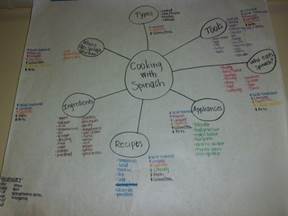
Calling All Chefs: Cooking with the Children
Gail felt that her first task was to develop spinach recipes that infants and toddlers could help cook. She decided to choose recipes based on the children’s expanding interests and knowledge that she had observed as they experimented with the blender and spinach smoothies. She also wanted the recipes to be healthy. After researching several food web pages, she chose to use the existing spinach smoothie recipe in conjunction with a muffin recipe. For more than a month, the children and teachers made spinach muffins, spinach pancakes, or spinach smoothies. Brown bananas (to flavor the smoothies) and the blender were always present!
The children were highly engaged chefs. Because the credo of the Honeybee room is that children are competent and capable, Shalan and Gail set up the cooking activities to encourage independence. The children scooped, dumped, poured, stirred, and tasted. They also introduced their parents and staff members to baked goods made with spinach (see Figures 7–19).
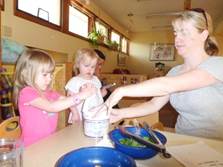
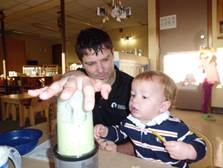

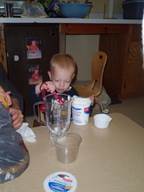
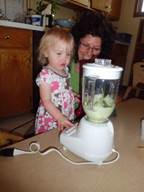
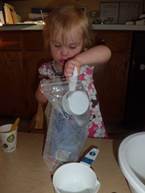
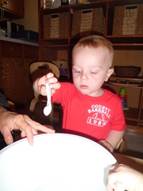

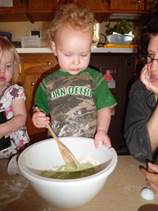
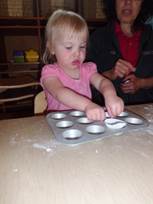
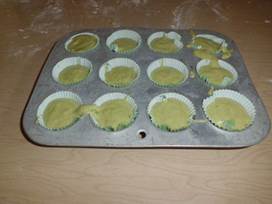
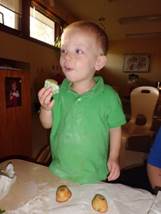

Everyone agreed that the spinach muffins tasted good.
Stories about Spinach: The “Great American Novel” Series
Gail had little luck finding children’s books to complement the class study of cooking with spinach. Therefore, she created picture recipe books by convincing her husband to be the spinach chef and main character.
Dana Plants Spinach
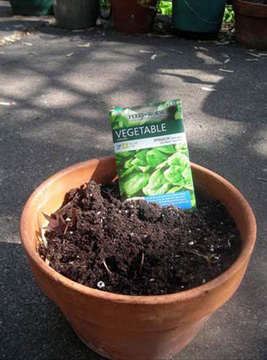
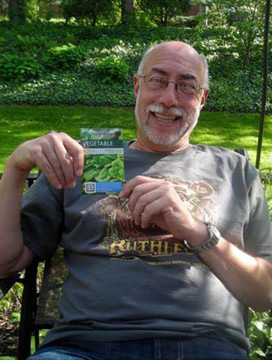
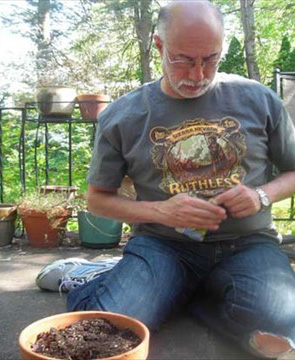
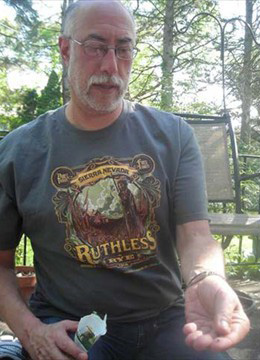
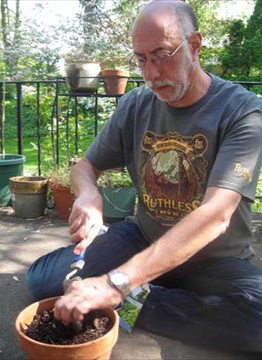



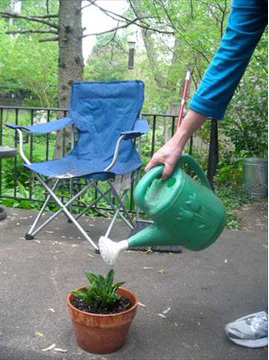
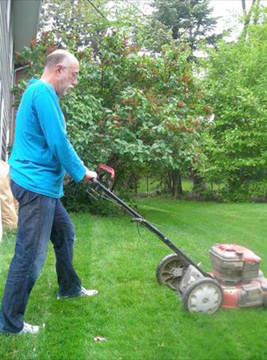
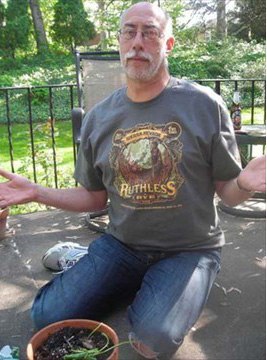
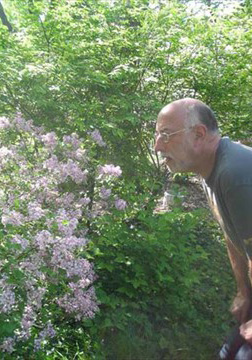
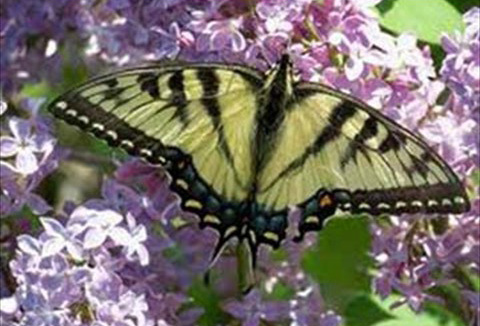
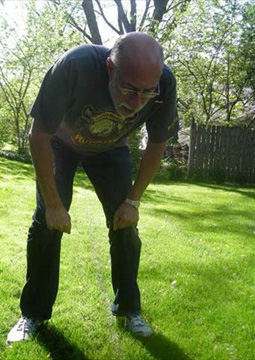
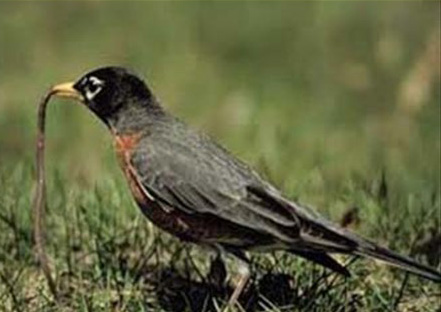
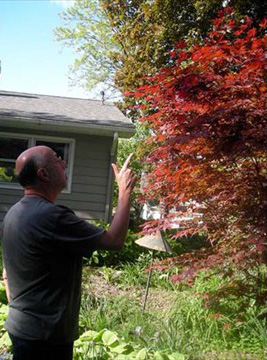
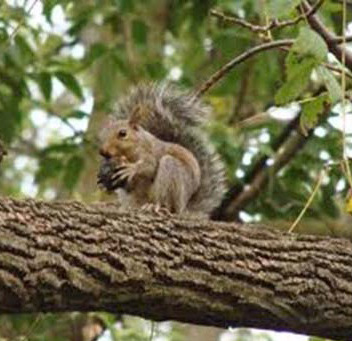
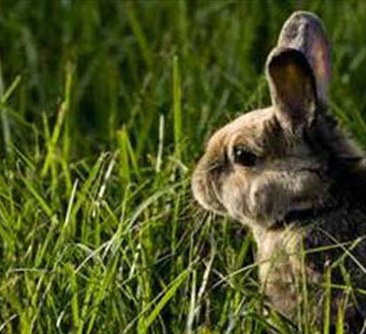

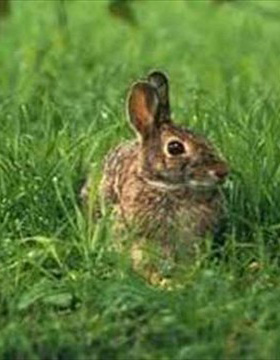
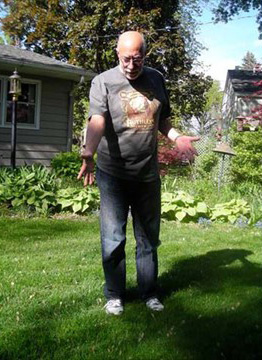
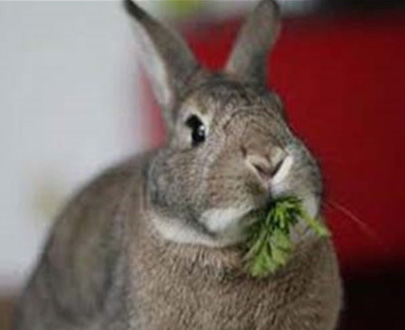
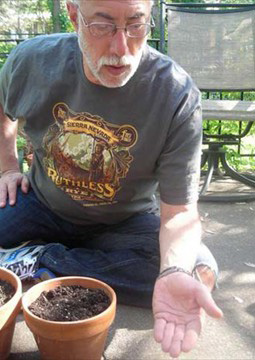
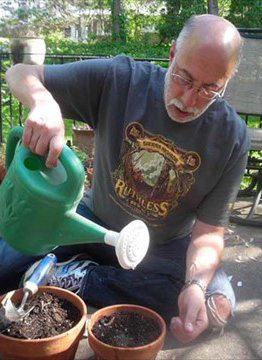
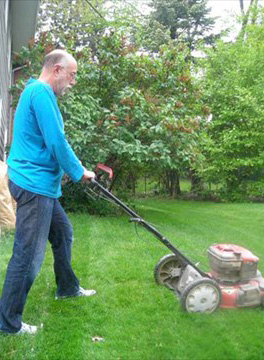

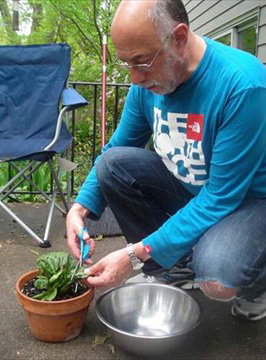
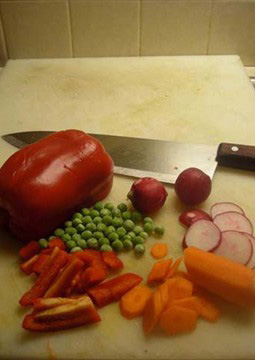
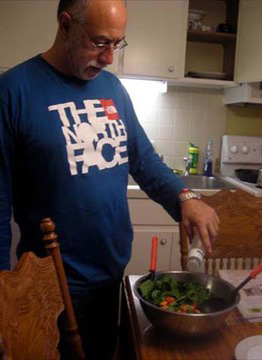


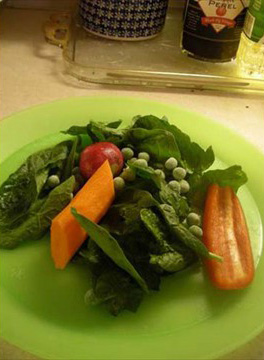
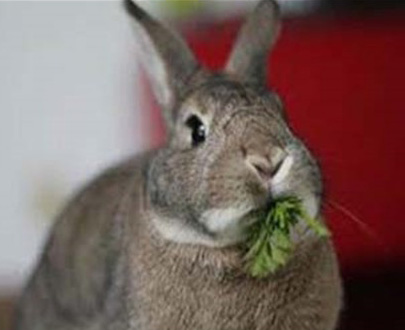
Muffins for Dana
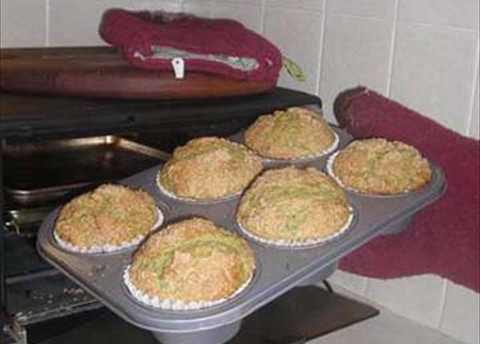

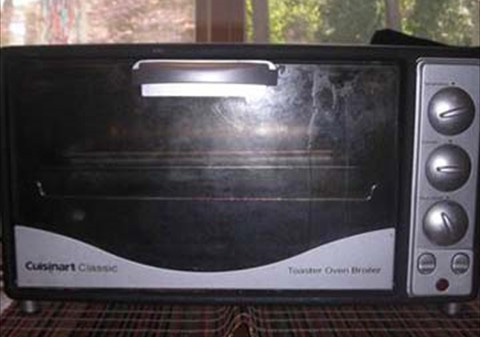
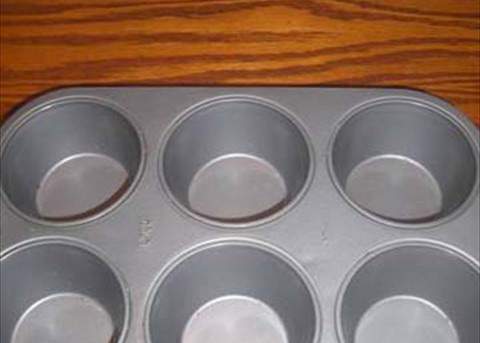
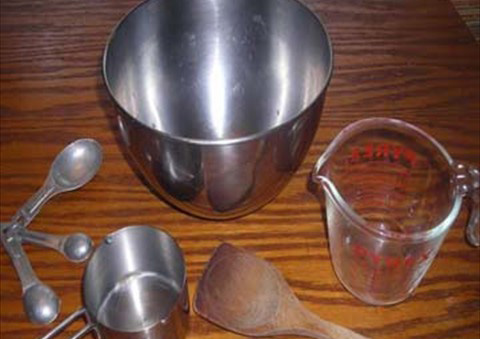
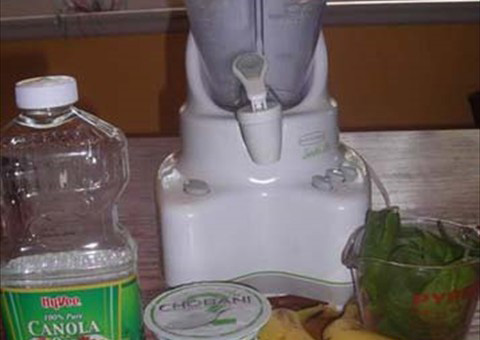
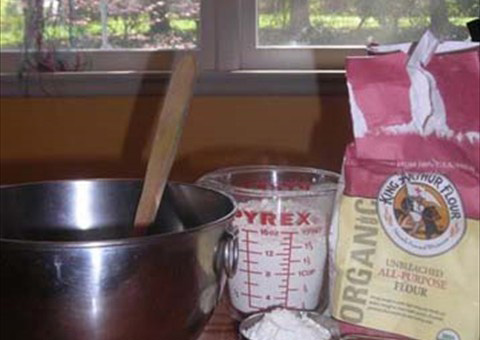
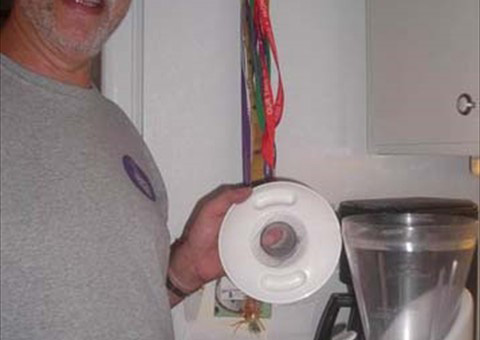
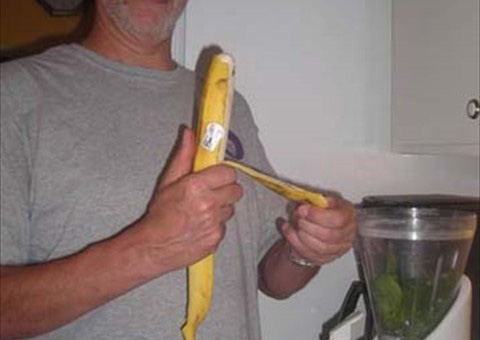
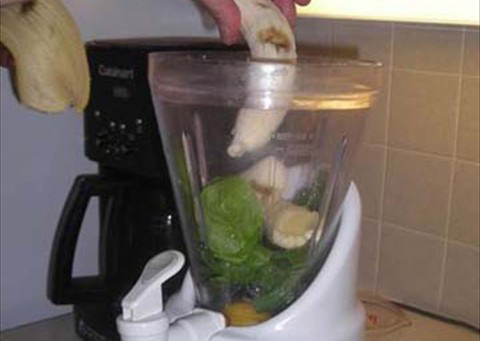
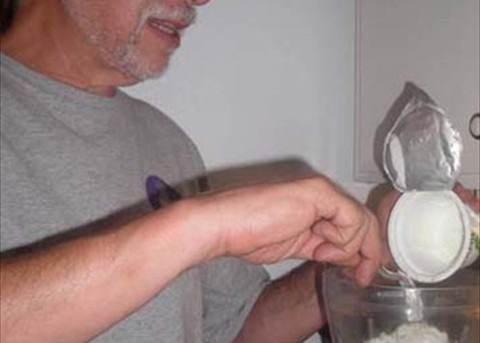
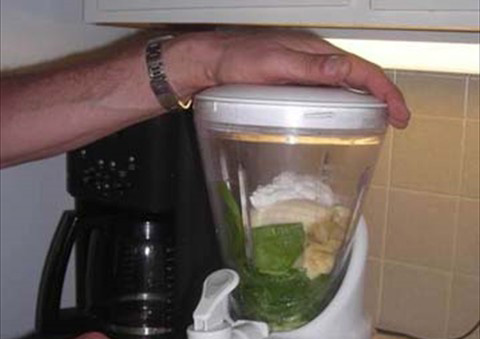
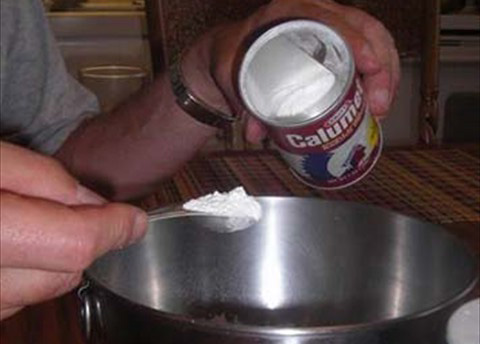
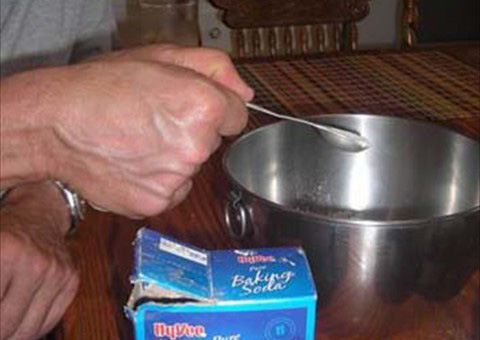

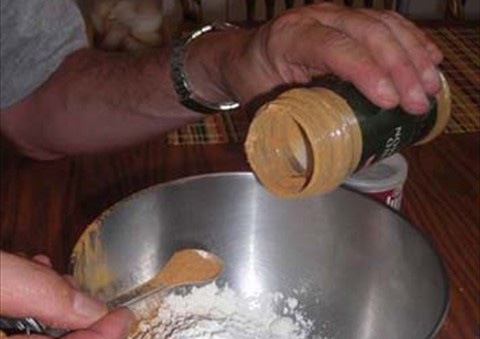
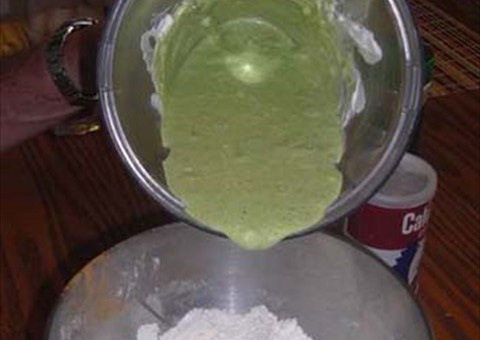

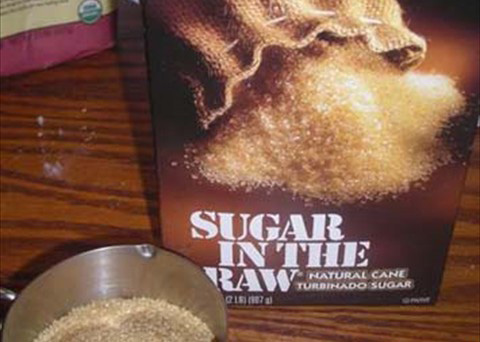
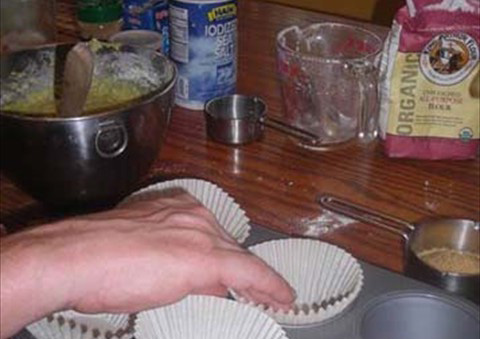

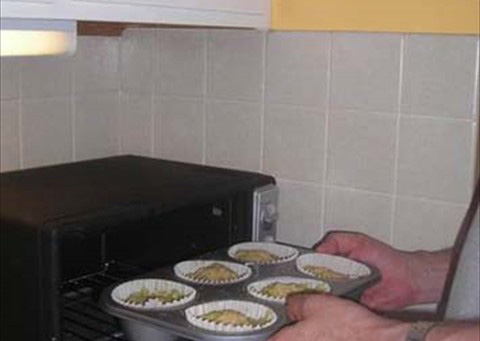
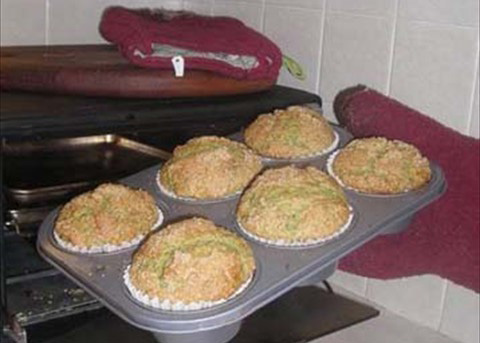
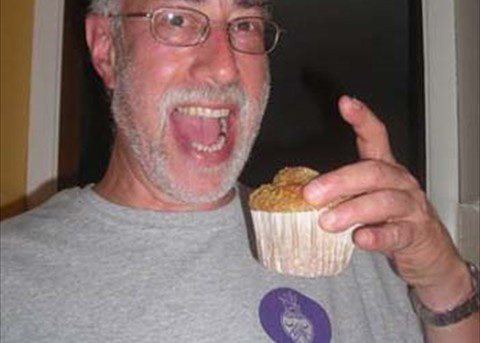
Shalan and Gail also created pictorial recipe cards and another book in which the children were the star chefs.
Growing Spinach: Plant It, Pick It, Eat It!
Spring came early in 2012. Bushes and trees were beginning to bud, and Gail saw an opportunity to take the spinach study outside. One morning she showed Eli (23 months) the package of spinach seeds that they would be planting and asked him if he knew what the package was. Eli said “Birds!” inferring that he thought they were for the birds. The children and Gail planted the spinach seeds on that cold spring morning, and several heads of spinach grew throughout the course of their project. (See Figures 20–21.)
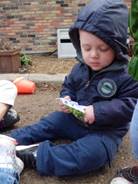
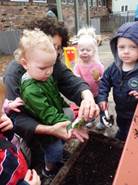
Buddy and Rio, the beloved Children’s Campus pet rabbits, were the happy recipient of fresh green spinach, which the children picked for them daily. The Honeybee class also harvested the remaining spring spinach for a salad of their own.
Annabelle pulled the spinach leaves off a plant and placed them into the bag Gail held open for her. (See Figure 22.) Conner pulled an entire spinach plant out of the bin and put it into the bag. (See Figure 23.) Eli placed a piece of spinach in the cage of the class rabbit Rio. He watched as Rio nibbled on it. (See Figure 24.) Conner washed the spinach by moving it around in a bin of water with a pair of tongs. (See Figure 25.) When the spinach was clean, Shalan and Gail set it aside and got out some fresh vegetables for the children to peel and slice. Conner held a carrot in one hand and a peeler in the other and attempted to peel the carrot. When the carrot was peeled, Conner passed it to Ani, who used a safety knife to try and cut it. (See Figure 26.) After a few attempts Ani put down the knife and tried to break the carrots into more pieces. (See Figure 27.) She ultimately said “Dalan, hep pease” (Shalan help please), and Shalan helped her chop the carrot into small pieces. Conlan reached into the bag of chopped carrots and other vegetables and grabbed a handful to place into the bowl of spinach. (See Figure 28.) Reese then added vegetables to the salad. (See Figure 29.) She passed the vegetables and bowl to Annabelle so she could have a turn to add vegetables to the salad. (See Figure 30.) Once the salad was assembled, Gail helped the children make a French vinaigrette dressing for the salad. (See Figure 31.) Ani used both hands to manipulate the tongs so she could toss the salad. (See Figure 32.) Conlan poked his salad with a fork so he could take a bite. (See Figure 33.)
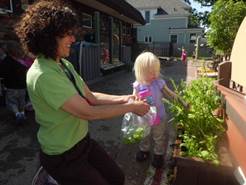
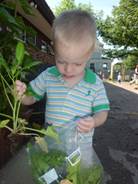
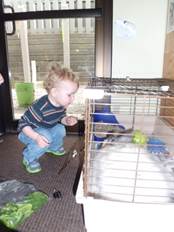
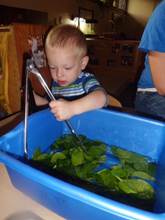
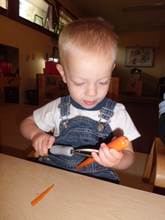
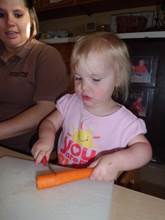
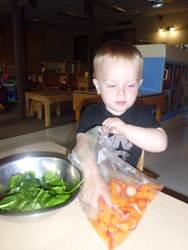
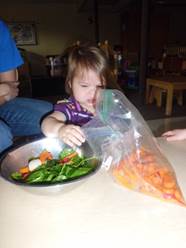
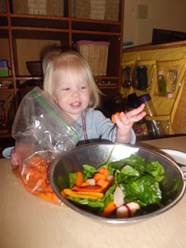
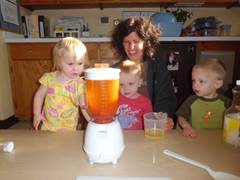
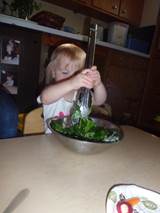
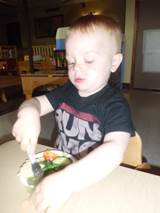
Adding Props for Pretend Play: The Honeybee Kitchen Shower
Shalan, Mindy, and Gail speculated that the children would benefit from continuing their study of cooking with spinach through creative play, so they added some relevant props to the Family Living Center: a pretend blender (actually a canister), measuring spoons and cups, canisters, an empty vanilla bottle, an empty salt container, baking powder and cinnamon containers, an empty egg carton, a timer, and muffin tins. Small grocery carts also were available for the children to do their shopping so they could prepare spinach muffins and smoothies. Gail also filled up a cellophane spinach bag with torn pieces of green construction paper. Several toddlers made delicious pretend spinach muffins and smoothies to give to their friends (see Figures 34–37).
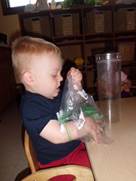

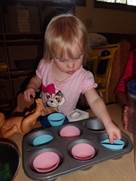

Phase 3: Concluding the Project
One day after the center had closed at 5:30 p.m., families of the Honeybee class congregated in the classroom for the culmination of the Cooking with Spinach Project. Before the families arrived, Shalan and Gail arranged separate working kitchens in their classroom. They provided a set of recipe cards, a blender and toaster oven, cooking tools, and a table for each of the families who participated. They then suggested to the parents that they act as sous chefs (assistant chefs) for their knowledgeable toddlers.
The culmination coincided with dinner. Gail wondered if the children would be tired or irritable. She was also worried that parents would be anxious to get home. Although she had no idea what to expect, she was pleasantly surprised by the outcome. The happy chatter of the parents and siblings was delightful and unforgettable. The room was orderly as families set to work making muffins, salad, and smoothies with much camaraderie. The children experienced laughter filling the classroom along with the sights and sounds of cooking. They demonstrated to their parents all that they had learned.
The communal cooking during the culmination was valuable for the parents as well. Not only did they have fun congregating with other parents and teachers, they also had the opportunity to be a part of what their children had been learning. Reese, her sister, Camryn, and her mother, Corby, gathered around a table to make spinach smoothies. Jordan and her dad washed the radishes for their spinach salad, and with her mother, she tossed the vinaigrette onto the spinach to make the salad. Jaxsen’s sister Grace handed Jaxsen an egg. He tried unsuccessfully to crack it. Grace then tapped the egg on the side of the blender and dropped it in. (See Figures 38–41.) The teachers were able to sit back and relish the culmination of a successful project.

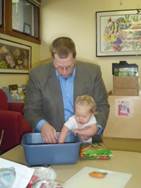

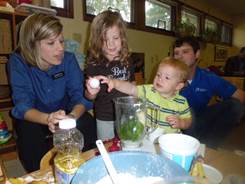
Teacher Reflection
The Cooking with Spinach Project provided rich opportunities for the infants and toddlers of the Honeybee room to investigate cooking and its related tools and appliances. During their investigation, they learned a great deal about problem solving and experimented with scientific thinking and the scientific process. The children seemed to be highly motivated to practice using these real cooking tools for cutting, peeling, scooping, and stirring. Repetition leads to mastery, so the length of the project allowed the older toddlers to practice these skills on multiple occasions. Also, having many cooking tools for pretend play in the Family Living Center enhanced the project by giving children more opportunities to dump, pour, measure and cut.
The children also were able to engage in many social interactions with each other, their caregivers, and family members. The toddlers were eager to communicate their knowledge of cooking and did so in several ways. For example, Eli saw the toaster oven and said, “Hot.” Ani demonstrated the sign language words for spinach and carrot. The toddlers also used sign language for the word green; they had observed on a regular basis how spinach blended with the yogurt mixture to make a beautiful green concoction.
Planting spinach seeds outdoors enhanced the investigation of spinach. Many of the toddlers first thought that the seeds were being hidden in the dirt for them to find. Gail introduced the concept that the seeds needed to sleep before they would come up, and after several days, the toddlers lost interest in finding the seeds. But within a few weeks, their interest emerged again when they spotted seedlings. The teachers also introduced the idea that plants, like people, need water, and the toddlers used watering cans to water their plants. The teachers anticipate that, with continued repetition of the planting, growing, and harvesting cycles of vegetables, the children’s understanding of where food comes from will deepen.
The late home-cooking advocate Marion Cunningham wrote that “Food is more than fodder. It is an act of giving and receiving because the experience at table is a communal sharing; talk begins to flow, feelings are expressed, and a sense of well-being takes over” (Cunningham, 1979). Through this project, Gail discovered that many of the young participants were eager to give, to receive, and to enjoy sharing within their community. The teachers observed that the toddlers joyfully gave their spinach creations to others. They were joyful in performing the blender dance, joyful in exploring the materials, and so joyful in sampling their own goods!
A project on Cooking with Spinach can be ongoing. Spinach can be grown again in the fall and the cooking applications could include hot spinach recipes. With repetition, the children can continue to study the properties of spinach and the cycles of the seasons.
References
Cunningham, Marie. (1979). The Fannie Farmer Cookbook (12th ed.). New York: Alfred Knopf.


 Printer-friendly PDF
Printer-friendly PDF Printer-friendly PDF
Printer-friendly PDF